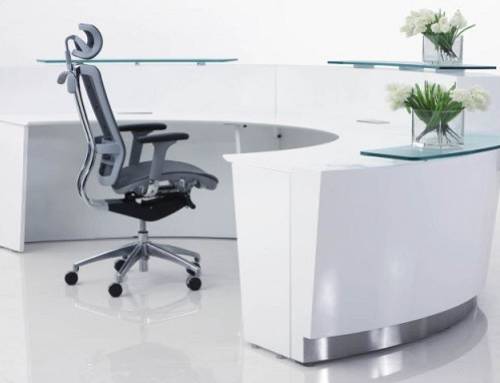The world of office furniture design has come a long way since cubicles and fluorescent lighting. Today’s modern workspace are designed to inspire creativity, promote collaboration, and support employee well-being.
With so many new and exciting trends in office furniture design, it can be challenging to keep up with the latest developments. Let’s explore the top 5 trends in modern office furniture design and some tips on implementing these trends in your workspace.
1. Ergonomic Furniture
Ergonomic furniture is designed to provide maximum comfort and support to employees, reducing the risk of injury and fatigue. Ergonomic chairs, desks, and other furniture promote good posture and reduce the strain on the back, shoulders, and neck. Investing in this furniture can help reduce absenteeism, increase productivity, and encourage employee well-being.
An excellent example of good ergonomic furniture is the standing desk. Standing desks reduce employees’ sitting time and encourage more movement throughout the workday. They help improve posture, increase energy levels, and reduce the risk of chronic diseases associated with sitting for long periods. Standing desks, including manual and electric, come in different styles and can be adjusted to different heights.
2. Sustainable Materials
Sustainability is a critical concern for businesses and consumers alike, and modern office furniture design is no exception. Sustainable furniture reduces environmental impact using eco-friendly materials and manufacturing processes. This furniture is made from renewable materials such as bamboo, recycled plastic, and sustainable wood.
This furniture is designed to be durable and long-lasting, reducing the need for frequent replacements. This furniture helps companies reduce their carbon footprint and promote their commitment to environmental sustainability. Investing in sustainable office furniture Perth helps companies attract and retain eco-conscious employees and customers.
3. Collaborative Workspaces
Collaborative workspaces encourage teamwork, communication, and creativity. These workspaces are flexible and adaptable, allowing employees to work in groups or individually as needed. These can include open-plan offices, shared workstations, and communal areas designed for brainstorming and collaboration.
Collaborative workspaces increase employee engagement and productivity and foster community and belonging. They can also help break down traditional hierarchies and promote a more egalitarian workplace culture.
4. Flexibility and Adaptability
The modern workplace is constantly evolving, and companies need to be able to adapt to changing needs and circumstances. Furniture that can be easily moved, reconfigured, and adjusted to meet the needs of different employees and tasks is essential.
Modular furniture is a famous example of flexible and adaptable furniture. You can easily reconfigure modern furniture to meet the changing needs of a workspace. For instance, you can create workstations, meeting spaces, and communal areas as needed. Modular furniture is also designed to be durable and long-lasting, reducing the need for frequent replacements.
5. Technology Integration
Furniture that integrates technology can help employees work more efficiently and effectively. Technology-integrated furniture can include built-in charging stations, wireless charging pads, and built-in speakers and microphones.
Through this kind of furniture, companies stay ahead of the curve regarding innovation and technology. This way, companies can attract and retain tech-savvy employees.
Office furniture design is rapidly evolving, and staying on top of the latest trends is essential to create a functional, visually appealing, and comfortable workspace for your employees. Whether starting a new business or revamping your existing workspace, modern office furniture design can help you achieve your goals.







